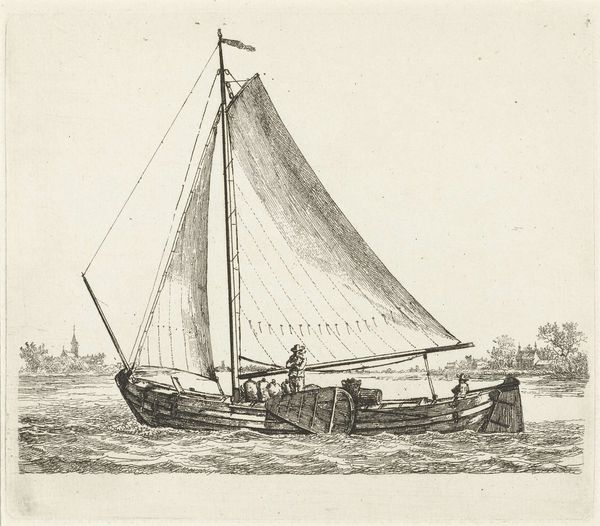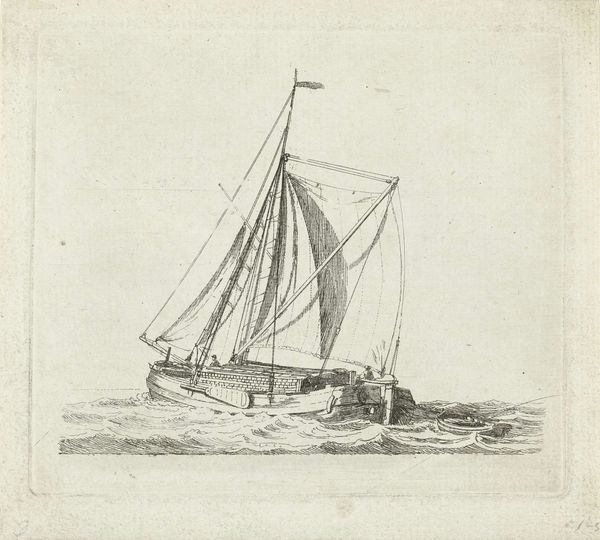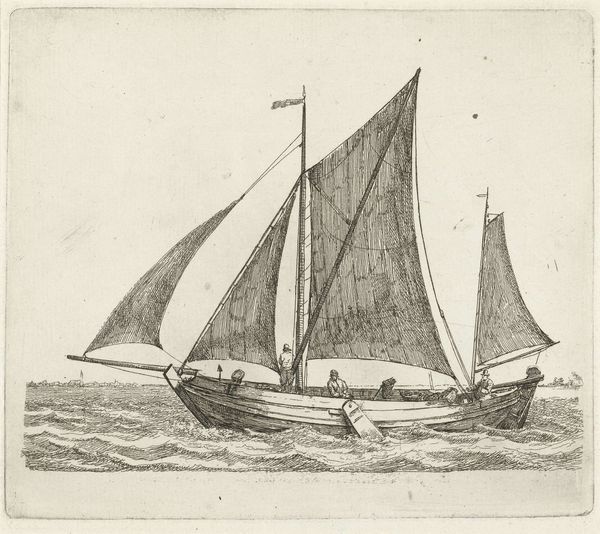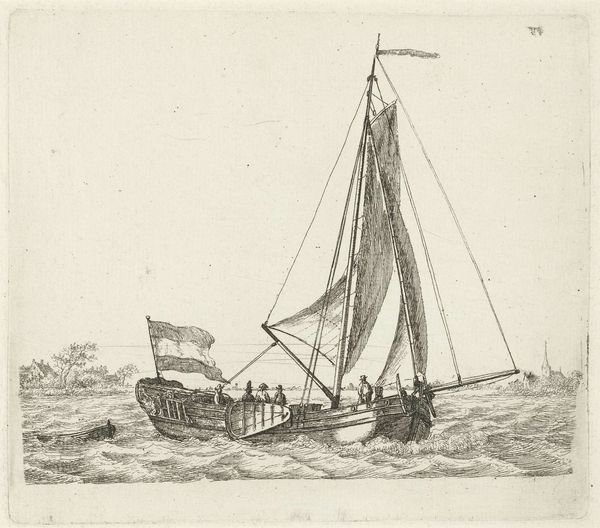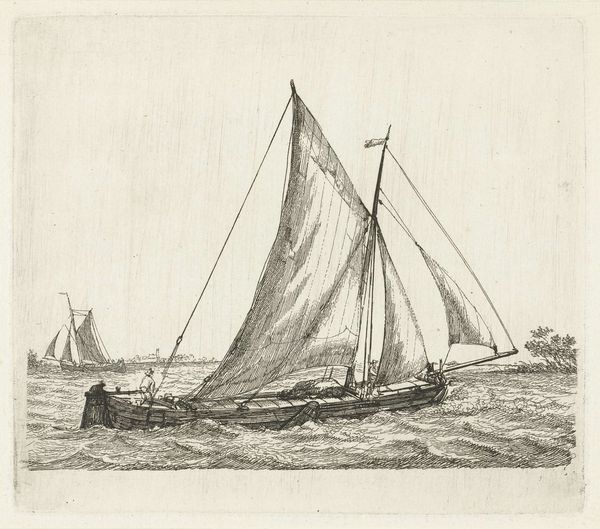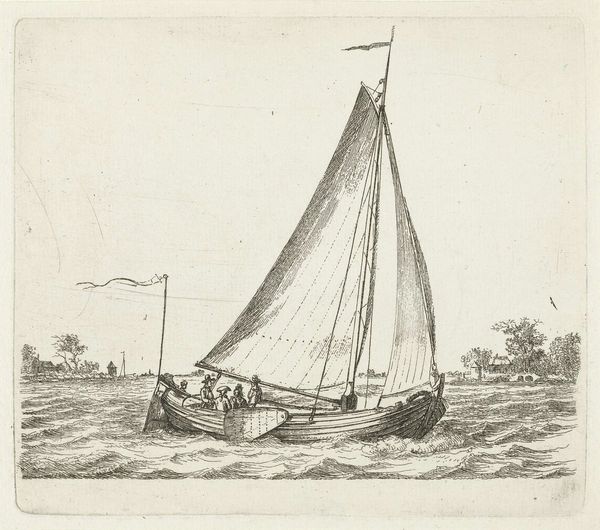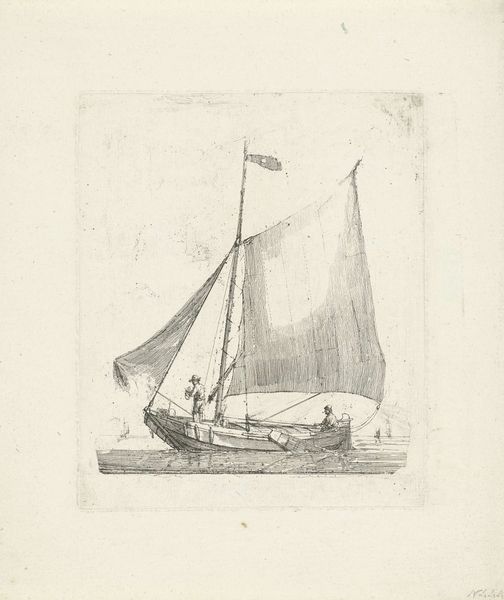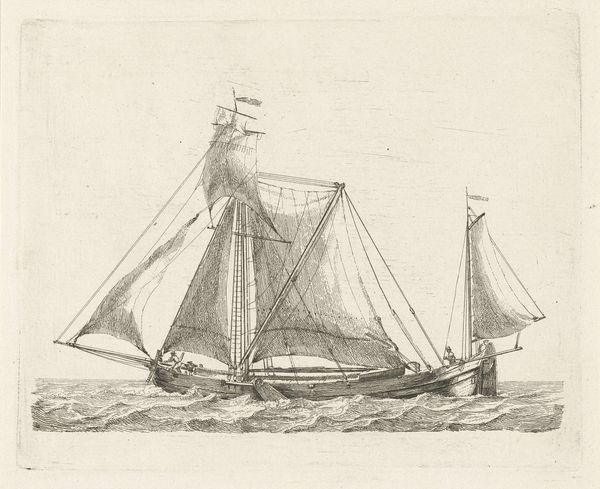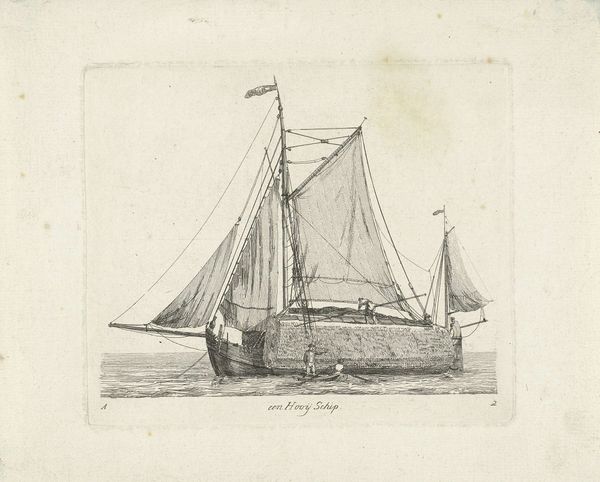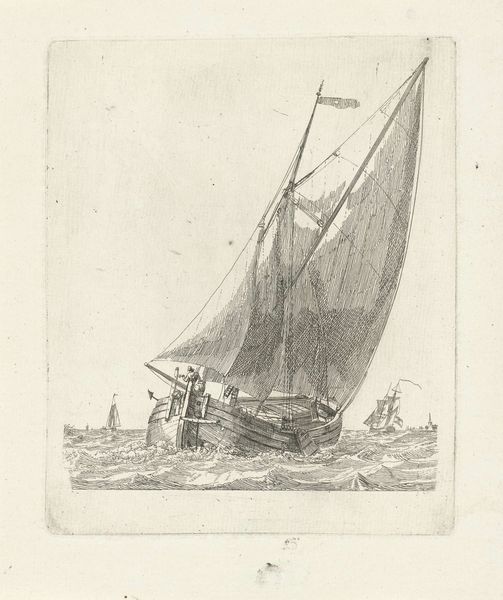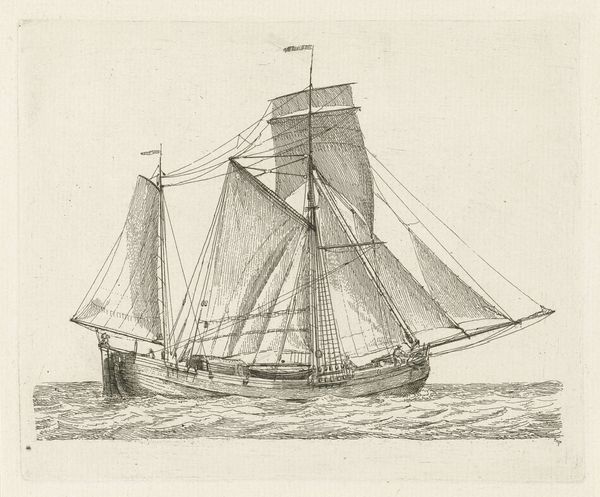
drawing, print, engraving
#
drawing
# print
#
landscape
#
engraving
Dimensions: height 136 mm, width 156 mm
Copyright: Rijks Museum: Open Domain
Editor: Here we have Gerrit Groenewegen's "Friese Praam," a drawing and engraving from 1791 held at the Rijksmuseum. The detail in the rendering of the waves is pretty captivating! What can you tell me about this work? Curator: It’s fascinating how Groenewegen captured this Friese Praam. The scene presents us with an important piece of social history. During the late 18th century, we saw burgeoning Dutch maritime trade but also increasing social stratification. Consider, for a moment, the labor implied: who benefits from this boat, and whose backs power it? What stories do the figures aboard embody? Editor: That's a very interesting way to see this drawing! I was really focused on the formal aspects of the landscape style... So, you’re saying it represents class structure? Curator: Indeed! By analyzing the image through the lens of labor, gender and commerce, we begin to see a complex narrative about Dutch society during this period. Who dictates the terms and who profits from trade? We could ask about the absent figures: where are the women? Who is excluded from this picture? Editor: Wow, I didn’t consider the perspective of the unrepresented... All these critical questions do bring another dimension to a simple drawing. Curator: Exactly. Thinking intersectionally can reveal so much about the complex social relations embedded within even seemingly simple artworks, which offers fresh insights and can challenge established narratives. Editor: Thanks, this definitely gives me a richer understanding of the Friese Praam, beyond just aesthetic appreciation.
Comments
No comments
Be the first to comment and join the conversation on the ultimate creative platform.

